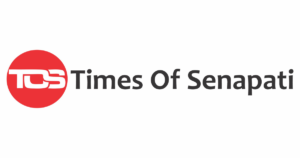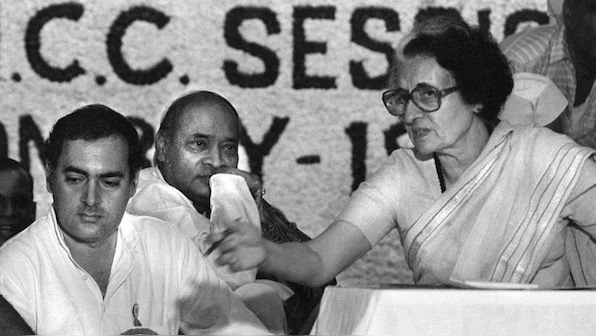Between June 25, 1975, and March 21, 1977, India was placed under a state of Emergency under Article 352 of the Constitution. This 21-month period marked one of the most significant and controversial chapters in Indian democratic and constitutional history, as political dissent was crushed, civil liberties suspended, and sweeping legal and administrative changes were introduced.
Lead-Up to the Emergency
The Emergency was declared amid escalating political unrest and judicial developments that shook the foundations of the ruling establishment. In the early 1970s, widespread dissatisfaction with the government grew due to increasing unemployment, inflation, perceived corruption, and a wave of student-led protests, particularly in Bihar and Gujarat, spearheaded by veteran socialist leader Jayaprakash Narayan.
A pivotal moment occurred on June 12, 1975, when Justice Jagmohanlal Sinha of the Allahabad High Court ruled that then Prime Minister Indira Gandhi had violated electoral laws during her 1971 Lok Sabha campaign. The court found her guilty under the Representation of the People Act, 1951, and disqualified her from holding elected office for six years. The case, filed by her defeated opponent Raj Narain, triggered a major political crisis. Although the Supreme Court granted a conditional stay allowing Gandhi to continue as Prime Minister, she was barred from voting in Parliament, further intensifying demands for her resignation.
Declaration of Emergency
On June 25, 1975, President Fakhruddin Ali Ahmed issued the Emergency proclamation under Article 352, citing internal disturbances. The move came after a government press note accused Jayaprakash Narayan and others of inciting the police and armed forces to disobey orders.
While this was the third Emergency in India’s history—following wartime proclamations in 1962 and 1971—it was the first declared during peacetime. Article 352, at that time, allowed Emergency to be declared on grounds of war, external aggression, or internal disturbance—a phrase later amended to “armed rebellion” by the 44th Constitutional Amendment in 1978.
The proclamation resulted in the concentration of executive power, placing state governments under direct central control.
Legal Measures and Suspension of Rights
Soon after the Emergency was declared, constitutional safeguards were systematically suspended. On June 27, 1975, Articles 358 and 359 of the Constitution were invoked.
- Article 358 suspended the enforcement of Article 19, curbing freedoms of speech, assembly, movement, and expression.
- Article 359 enabled the state to suspend enforcement of fundamental rights under Articles 14, 21, and 22, including the right to equality, life, and protection against arbitrary detention.
Citizens were barred from approaching courts, and thousands of political opponents were jailed. Prominent leaders such as Jayaprakash Narayan, Morarji Desai, Atal Bihari Vajpayee, and L.K. Advani were arrested under the Maintenance of Internal Security Act (MISA), a law widely used for preventive detention. According to the Shah Commission, nearly 35,000 people were detained without trial.
Censorship and Media Control
The Emergency saw unprecedented censorship and state control over the media. Beginning June 26, 1975, pre-censorship was imposed on all newspapers, requiring editorial content, photographs, and even headlines to receive prior government clearance.
- A national censor and regional censors were appointed.
- Radio-photo transmissions were subject to pre-approval.
- On July 5, 1975, telex communications by foreign correspondents were restricted.
- On July 20, 1975, the Board of Film Censors was restructured under the Cinematograph Act to tighten control over cinema.
- On February 1, 1976, four major news agencies—Press Trust of India (PTI), United News of India (UNI), Samachar Bharati, and Hindustan Samachar—were merged into a single agency named Samachar.
- The statutory watchdog, the Press Council of India, was abolished.
Legislative Amendments During the Emergency
A series of constitutional amendments passed during the Emergency further weakened judicial and institutional checks on executive power:
- 38th Amendment: Prevented courts from reviewing the President’s decision to declare Emergency.
- 39th Amendment: Exempted the election of the Prime Minister and Lok Sabha Speaker from judicial review.
- 42nd Amendment: Strengthened central authority, gave primacy to Directive Principles over Fundamental Rights, barred judicial review of constitutional amendments, and curtailed the powers of the Supreme Court and High Courts.
- The term of the Lok Sabha and State Legislative Assemblies was extended from five to six years.
Mass Sterilisation and Population Control Campaign
Among the most controversial aspects of the Emergency was the mass sterilisation programme launched in 1975 as part of an intensified population control strategy:
- In 1975–76, 26.42 lakh sterilisation procedures were conducted.
- In 1976–77, this figure rose dramatically to 81.32 lakh.
- Over two years, more than 1.07 crore sterilisations were performed nationwide.
- Some states linked access to essential services—such as rations, housing, healthcare, jobs, and loans—to compliance with sterilisation directives.
- Families with more than two or three children were denied government benefits if they refused sterilisation.
End of Emergency
The Emergency formally ended on March 21, 1977. General elections to the Lok Sabha were held between March 16 and 20, resulting in the defeat of the Congress party. The Janata Party formed the new government on March 24, 1977.
In May 1977, the Shah Commission of Inquiry was established to examine abuses of power during the Emergency. The 44th Constitutional Amendment was enacted in 1978 to address the excesses:
- Replaced “internal disturbance” with “armed rebellion” as grounds for declaring Emergency.
- Restored judicial review and introduced legal safeguards for future proclamations.
Shah Commission of Inquiry
The Shah Commission, headed by former Chief Justice J.C. Shah, investigated various abuses committed during the Emergency. The Commission held public hearings, gathered testimonies, and reviewed official records. It submitted three detailed reports between 1978 and 1979.
Key findings included:
- Detentions: As of January 1, 1975, Indian prisons held 2,20,146 inmates, against a capacity of 1,83,369. Of these, 1,26,772 were under-trial prisoners.
- Sterilisation Drive: Over 1.07 crore sterilisation procedures took place. The Commission received 548 complaints involving unmarried individuals and 1,774 deaths linked to the procedures.
- Forced Retirements: 25,962 public and government employees were prematurely retired.
- Press Restrictions: Power supply to newspaper offices in Delhi was cut during the initial days of censorship.
- Content Control: Parliamentary debates and judicial proceedings were censored, with judgments edited or blocked from publication.
- Media Monitoring: Newspapers were categorised as ‘friendly’, ‘neutral’, or ‘hostile’ depending on their editorial stance.
Conclusion
The Emergency period from June 1975 to March 1977 left a lasting impact on India’s constitutional and political framework. With civil liberties suspended, mass detentions without trial, media censorship, and sweeping legal changes, it represented a period of intense state control and erosion of democratic norms. The aftermath saw significant legal reforms, including the 44th Amendment, aimed at preventing future misuse of Emergency provisions. The Shah Commission’s findings remain a crucial historical record of one of India’s most contentious political eras.
Source: PIB Archives, Shah Commission of Inquiry (Third and Final Report)

